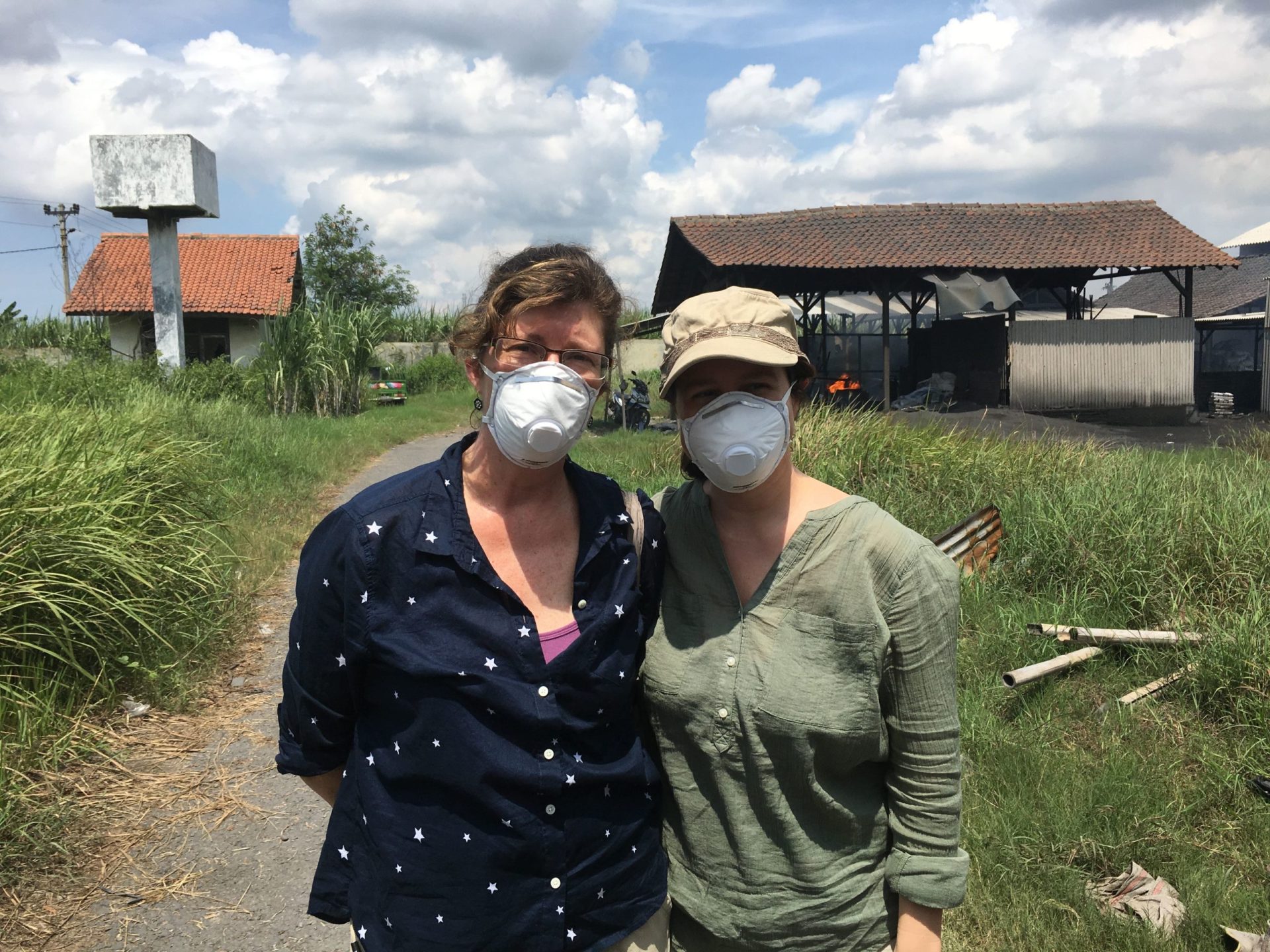
This week’s post is from Angela Bernhardt, Executive Director of Communications for Pure Earth.
After two and a half years in our New York headquarters, I took my first trip to the field with our Southeast Asia coordinator, Lara Crampe. We went to Pesarean, a village in the Tegal Regency of Indonesia located in Central Java that is contaminated with dangerous levels of lead from years of informal car battery recycling.
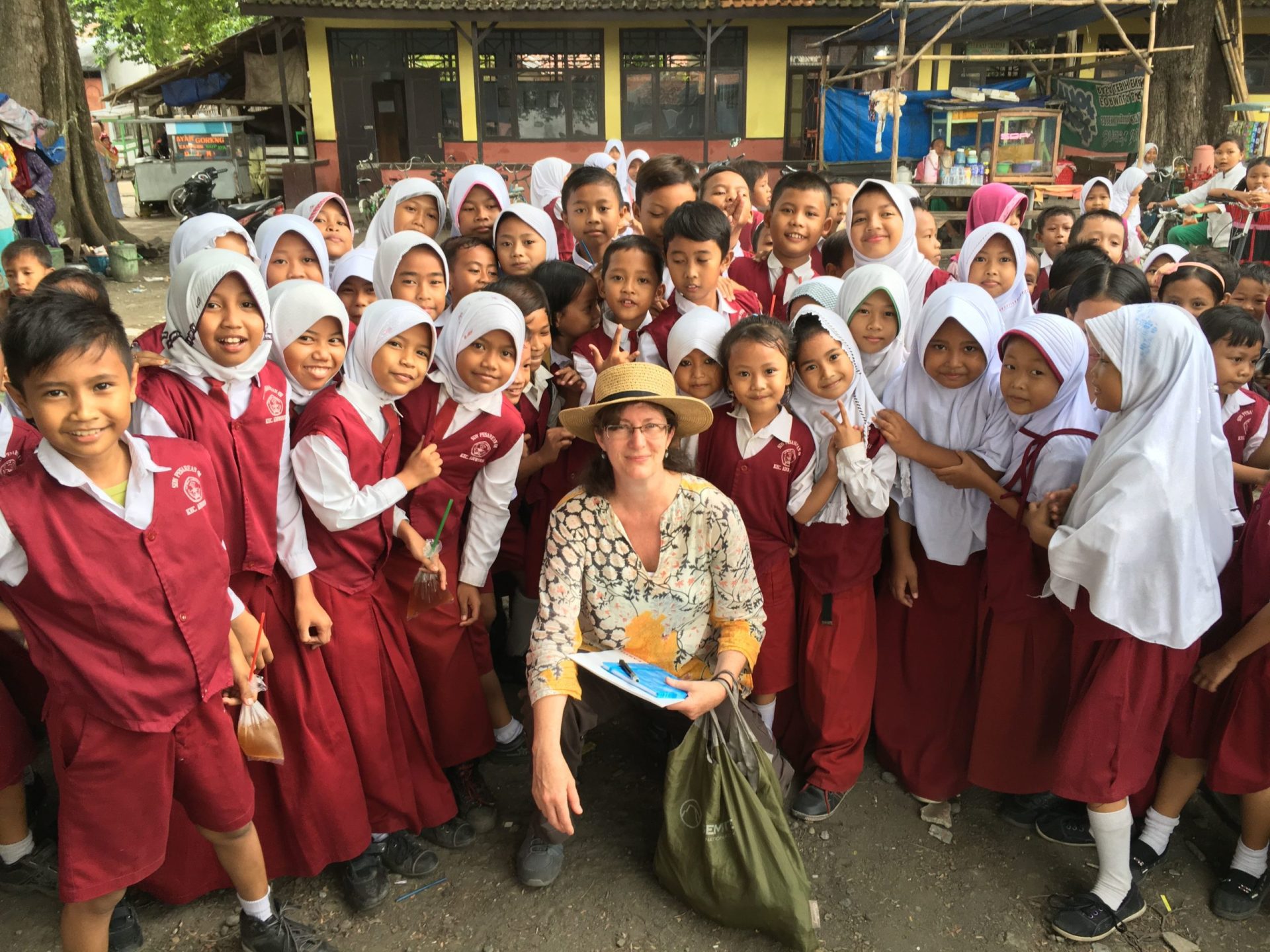
The Danish Aid Agency DANIDA funded phase one of this project, which includes an environmental and health assessment of the village, and the design of remediation options along with cost estimates. (More about potential solutions in Part 2.) 60% of adults have blood lead levels over 25 and lead levels in soil have been measured at over 54,000 ppm in some spots.
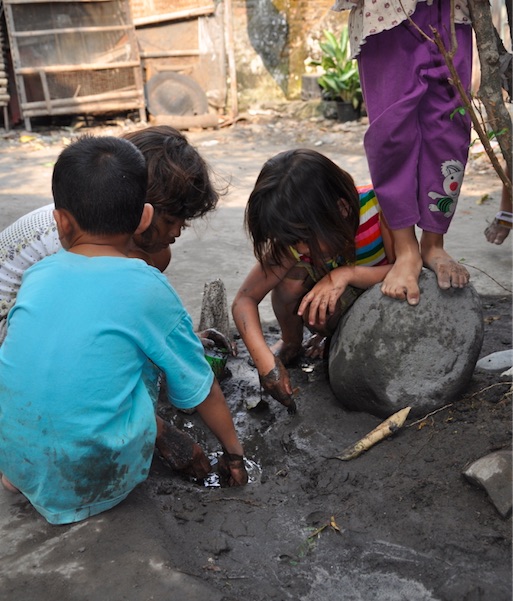
Tegal has been a proud metalworking center since the mid-1800’s. Metalsmiths across the region used a variety of materials over the centuries to make knives and swords, temple gongs, early locomotive and ship parts, buckets, pots, and more recently, electrical, auto and motorcycle parts.
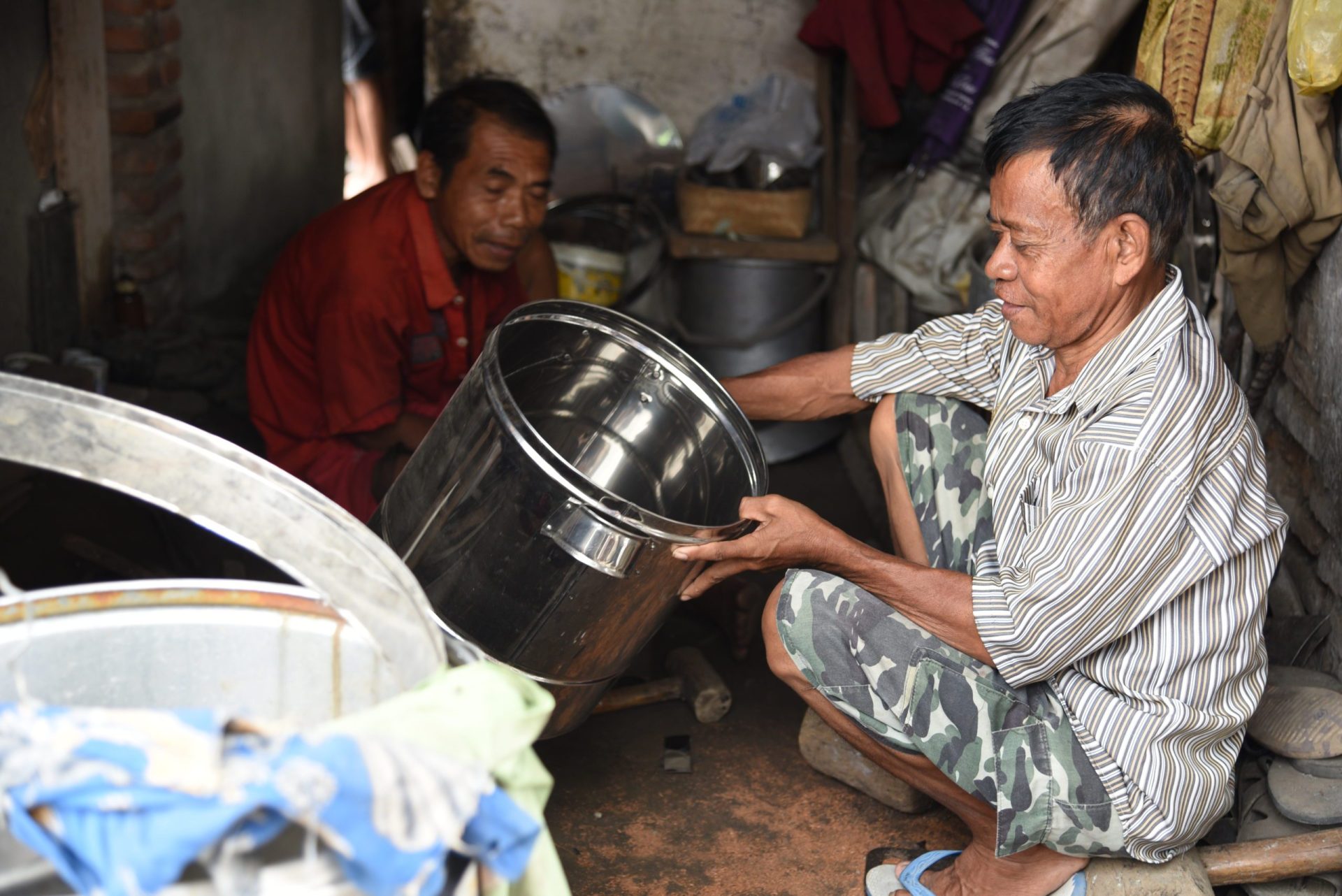
Today, many women and men in the village, earn a meager living dismantling electrical, machine, auto and other parts, sorting them into piles, that they then sell in large sacks to local smelters.
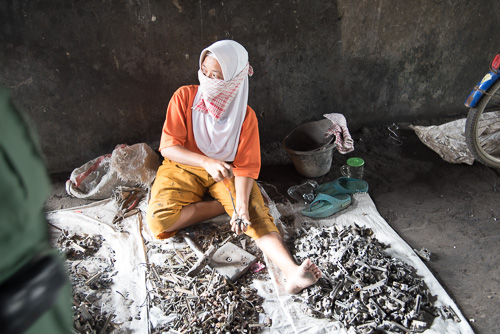
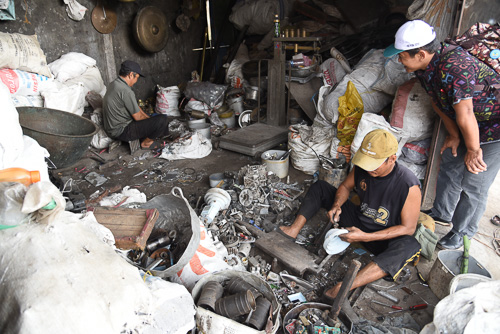
Around 1978, one enterprising but struggling metalworker, Pak Pat (not his real name), made his living crafting tin buckets. But when plastic buckets came on the local market and he needed to find a different livelihood, he started smelting lead from discarded lead acid car batteries. Used batteries were becoming more plentiful as car and motorbike ownership grew in the region, and safe battery collection systems were, and still are, non-existent. Each car battery contains about 20 pounds of lead.
Pak Pat, working outside his home, broke open the batteries, poured out the acid, smelted the lead into ingots and sold them to factories nearby. This was more profitable than making tin buckets and after some years of hard work, Pak Pat went from living in a very small dwelling his parents gave him, to buying 5 houses for his family members.
Of course, Pak Pat did not know that lead was a dangerous toxic element, and this prosperity came at a very high cost.
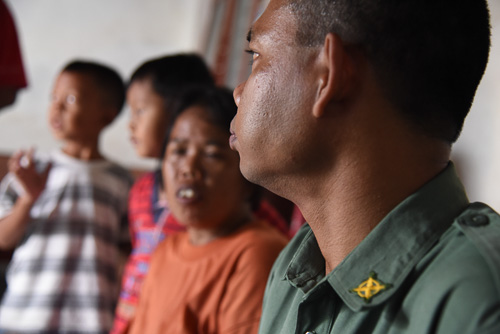 Mas Tasiri (not his real name), Pak Pat’s nephew and a Pesarean Village Official told us the story of his family. Pak Pat and his wife had 10 children. Three died as infants. Three sons are brain-damaged and are described as having down syndrome. One has never been able to speak. The oldest son does not have brain damage, but has respiratory problems so severe that he requires regular hospital visits. Pak Pat died at the age of 63.
Mas Tasiri (not his real name), Pak Pat’s nephew and a Pesarean Village Official told us the story of his family. Pak Pat and his wife had 10 children. Three died as infants. Three sons are brain-damaged and are described as having down syndrome. One has never been able to speak. The oldest son does not have brain damage, but has respiratory problems so severe that he requires regular hospital visits. Pak Pat died at the age of 63.
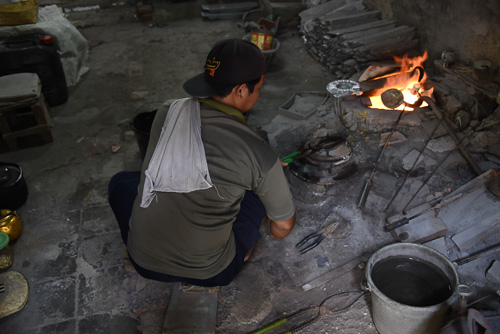 Soon, lead smelting from used car batteries became widespread in Pesarean and by 1982 several villagers were selling ingots to industrial buyers.
Soon, lead smelting from used car batteries became widespread in Pesarean and by 1982 several villagers were selling ingots to industrial buyers.
In many villages of this type in the developing world, the industrial activity takes place in residential areas, right where people live, play, grow food, cook and feed babies and children. We commonly see this across Asia, Latin America and Africa. Workers have small workshops wedged in between dwellings, or do the work in their yards, or in a common open space in the center of a village. In the worst cases, they smelt lead inside their homes.
This results in constant, long-term exposure to high levels of toxic materials, generation after generation, causing serious health and environmental damage.
In 1999, Tasiri’s only son was born with half his body paralyzed. As his baby grew into a toddler, he started having respiratory problems. Tasiri described how the lead acid from batteries, dumped on the ground, would visibly evaporate in the intense heat throughout the day. He feared these vapors, in addition to the smoke from smelting, was hurting his child. He was still not aware of the dangers of lead. Tasiri moved his family 3 kilometers away from the smelting activity, and his son’s lungs recovered. At 6 years of age, the boy insisted on going to the village school rather than the school for disabled children 2 hours away. His father carried him to and from school everyday. Tasiri also made sure his son always received physical therapy, so now, at 17, he has partial use of his other hand. “Everything I do is for my son,” he said.
Metal smelting, whether it’s aluminum, lead or other materials, results in waste called slag, a dark charcoal ash with bits of leftover melted metals and other by-products from the intense fires.
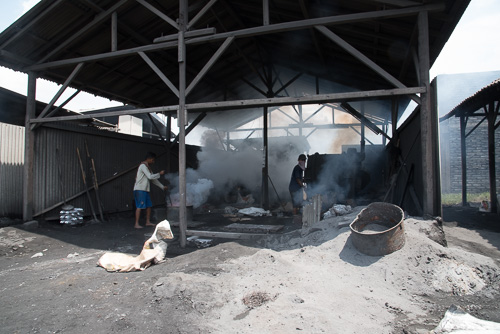
Before the government created the industrial zone outside the village in 2010, everyone in Pesarean dumped their slag in a big pile in the middle of the village. This waste had to go somewhere. Workers couldn’t let it takeover their yards or workspaces. Because much of the slag is from lead smelting, this dumpsite is a major health risk and a top priority in the cleanup project.
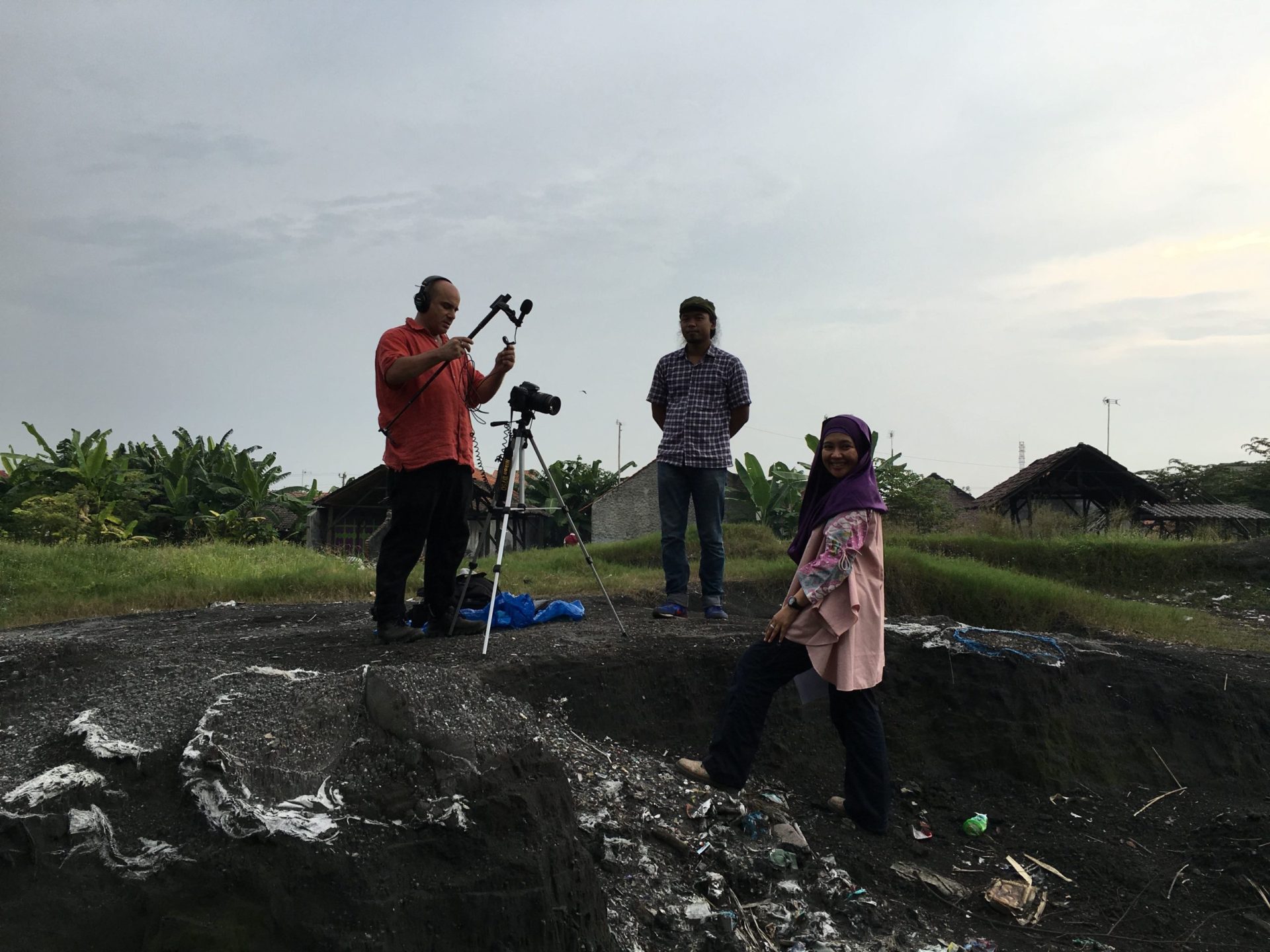
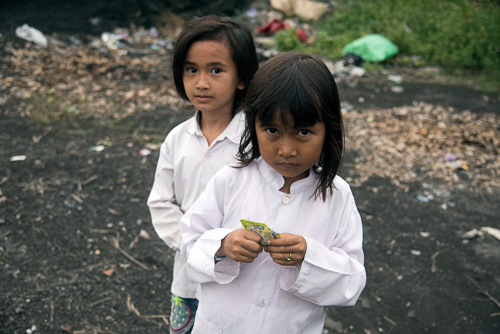
People walk back and forth through the dumpsite every day. Children run around the dump barefoot after school while eating snacks, increasing ingestion of lead.
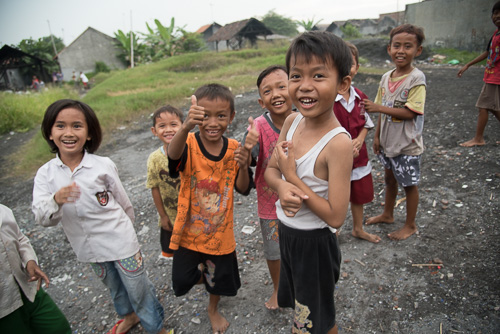
We have not yet tested the blood lead levels of village children, just the adults. But recent research on BLLs of children in Indonesia near informal lead smelting reported the following,
… It was found that many children in the areas were having difficulty achieving high grades at school and having stunting or other problems with physical development. The average mean of BLLs increased by almost double in 2015, compared with in 2011. http://www.ncbi.nlm.nih.gov/pubmed/26812760
In 2010, after three decades of open air lead smelting and severe environmental and health impact, the government created an industrial zone to move all the smelting activity 1 kilometer, or a little over a half mile, outside the village.

A formal lead smelting factory was built which is owned and run privately, but currently lacks environmental controls. The informal, independent smelters formed a co-op and they work in open sheds just outside the formal factory.
These incremental steps are very important and represent progress. But many of the villagers now share a sense of urgency about getting the cleanup started. Many know their health and the health of their children is at risk, but as one villager, Mas Zamroni told me, “I hope to see a change in the environment. It’s been spoiled by smelting. I’m not blaming, we have to work to live, but I hope the government helps us.”
Cleaning up this site is a top priority at all levels of government in Indonesia; the Village level in Pesarean, the Regency level in Tegal and the National level in Jakarta. DANIDA is also committed to resolving this environmental problem.
Last week, the Pure Earth team presented final remediation plans and options to government officials. We are happy to report that the project has just been approved. The next steps involve determining the level of funding each partner will provide and how and when the cleanup can get started.
We will post updates as the project gets underway, so be sure to follow us on social media. Thanks for reading this and please share with your networks!
Angela Bernhardt
From the Project Page: Indonesia (Pesarean Village, Tegal) – Developing Remediation Designs for Lead Contamination





